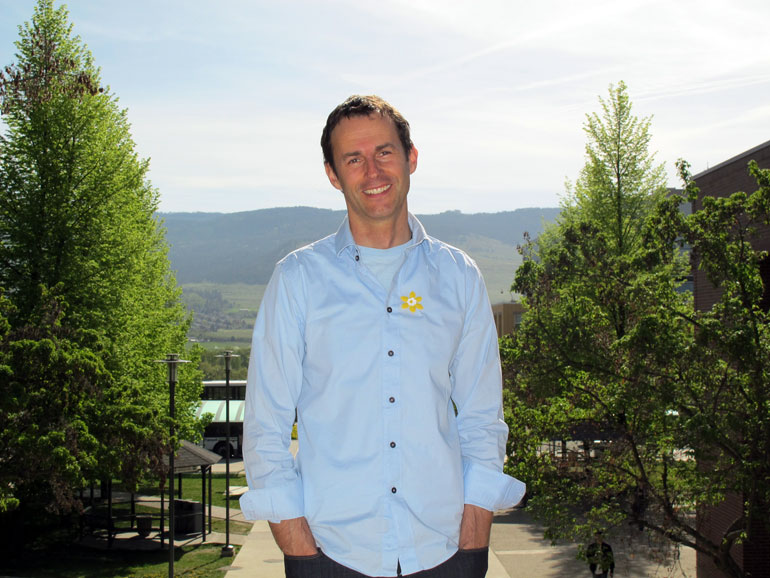A new program at UBC’s Okanagan campus may change the way radiation affects cancer patients and how they feel during treatment.
Starting this fall, in collaboration with the BC Cancer Agency’s Sindi Ahluwalia Hawkins Centre for the Southern Interior, the Irving K. Barber School of Arts and Sciences will offer a master’s and PhD program in Medical Physics (medicalphysics.ok.ubc.ca).
Assoc. Prof. Andrew Jirasek, chair of the newly developed medical physics graduate program, is excited about the opportunities in cancer research the program will bring to the Okanagan. Through innovative research on cancer treatment and prevention, members of the physics program are attacking cancer on several fronts.
“There is a great marriage between physics and medicine,” says Jirasek, explaining that UBC faculty work on a range of research projects in radiation oncology, medical imaging and biomedical spectroscopy.
“The outcome of our research will ultimately transform the way radiation therapy is delivered. This, in turn, will lead to better treatment for patients, improving the efficacy of radiation therapy while at the same time reducing the side effects.”
Jirasek and colleagues from engineering, biology and chemistry are using an optical technique called Raman spectroscopy to see how radiation may affect people at the cellular level. From here, dosage can be adjusted to be more precise and targeted.
“This is a very powerful technique. We can record and analyse information about how cells and tissues change throughout treatment,” says Jirasek. “Previously, the only outcome of treatment was disease status; for example if a tumor had shrunk or grown. Our hope is that this Raman analysis will provide accurate treatment evaluation sooner.”
Timing with cancer treatment is everything, he says, stressing the sooner successful therapy is implemented, the better for the patient.
Under this new Medical Physics graduate program, students will have access to a full graduate course curriculum in radiation oncology medical physics, and will have the opportunity to learn about, and work on, world-class research projects.
“As radiation is such a significant part of cancer therapy, it’s important to make it as effective as possible,” Jirasek says. “Advances in delivery technology have enabled radiation beams to be rotated and adjusted to target the tumour and spare the healthy tissue, which will reduce side effects.”

UBC Assoc. Prof. Andrew Jirasek
—30—